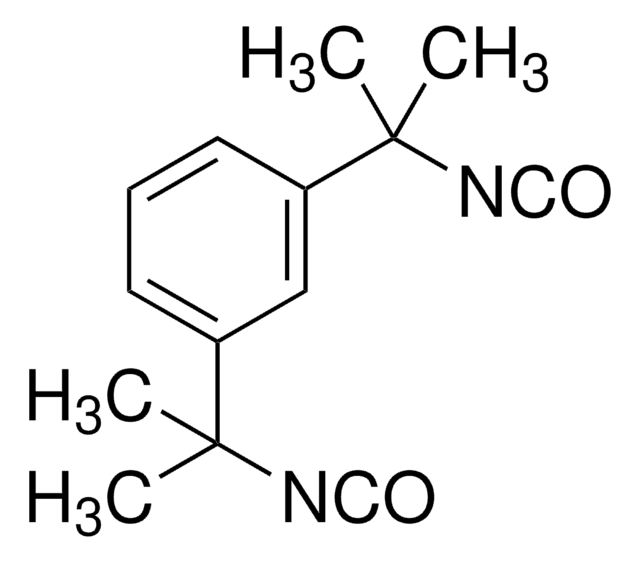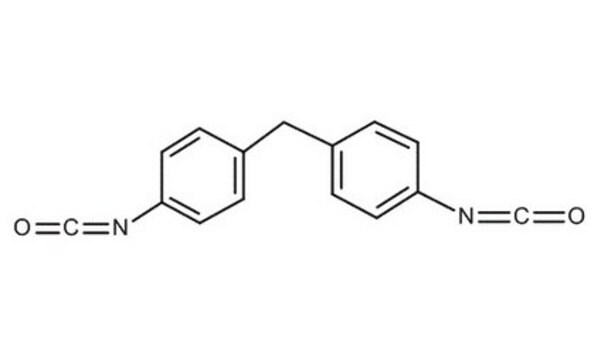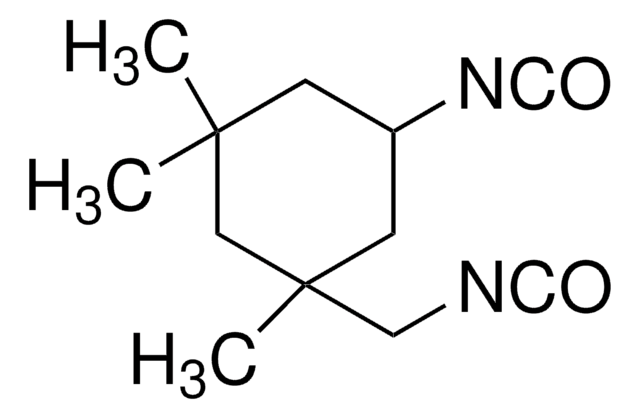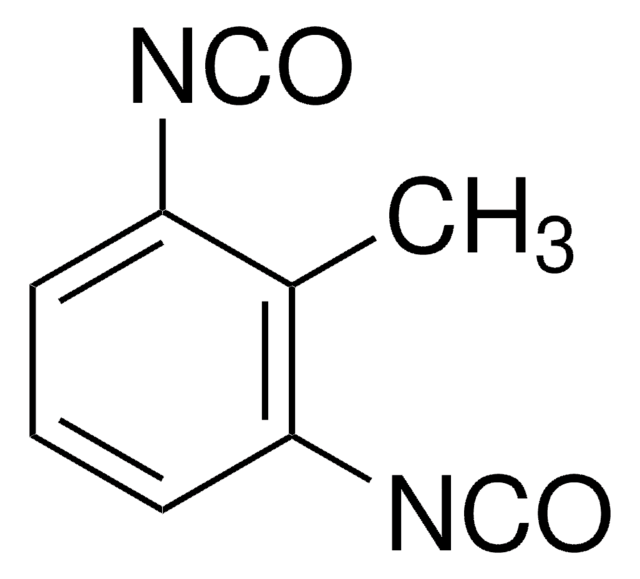추천 제품
Quality Level
분석
98%
양식
solid
반응 적합성
reagent type: cross-linking reagent
bp
200 °C/5 mmHg (lit.)
mp
42-45 °C (lit.)
density
1.18 g/mL at 25 °C (lit.)
저장 온도
−20°C
SMILES string
O=C=Nc1ccc(Cc2ccc(cc2)N=C=O)cc1
InChI
1S/C15H10N2O2/c18-10-16-14-5-1-12(2-6-14)9-13-3-7-15(8-4-13)17-11-19/h1-8H,9H2
InChI key
UPMLOUAZCHDJJD-UHFFFAOYSA-N
유사한 제품을 찾으십니까? 방문 제품 비교 안내
일반 설명
4,4′-Methylenebis(phenyl isocyanate) (MDI) is an aromatic diisocyanates class of monomer that is widely used in the production of polyurethane plastics, foam insulation, coatings, adhesives, and sealants. It is highly reactive due to the presence of two isocyanate functional groups. MDI is known for its excellent strength, durability, and resistance to chemical and environmental damage, which makes it useful in resin composition, lithographic printing plates, coating films, optical films, image display devices, semiconductor devices, and polyurethane foam production.
애플리케이션
4,4′-Methylenebis(phenyl isocyanate) can be used as a starting material to synthesize:
- Polyurethane cationomers, that are applicable in medical implants.
- A prepolymer for preparing self-healable polyurethane elastomers.
신호어
Danger
유해 및 위험 성명서
Hazard Classifications
Acute Tox. 4 Inhalation - Carc. 2 - Eye Irrit. 2 - Resp. Sens. 1 - Skin Irrit. 2 - Skin Sens. 1 - STOT RE 2 Inhalation - STOT SE 3
표적 기관
Respiratory system
Storage Class Code
11 - Combustible Solids
WGK
WGK 1
Flash Point (°F)
411.8 °F - closed cup
Flash Point (°C)
211 °C - closed cup
개인 보호 장비
dust mask type N95 (US), Eyeshields, Faceshields, Gloves
이미 열람한 고객
Journal of Applied Physiology, 70, 6983-6983 (1991)
Malin Engfeldt et al.
Contact dermatitis, 68(3), 175-180 (2012-10-11)
A 43-year-old woman was referred by her occupational health service with suspected occupational contact dermatitis. In connection with the investigation, a workplace visit was undertaken at her company, which used an adhesive based on pre-polymeric diphenylmethane diisocyanate in one of
A comparison of two sampling methods for the detection of airborne methylene bisphenyl diisocyanate.
Joshua W Schaeffer et al.
Journal of occupational and environmental hygiene, 10(4), 213-221 (2013-02-28)
The purpose of this study was to determine if there was a significant difference between two readily available sampling methodologies for airborne methylene bisphenyl diisocyanate (MDI), which is an essential precursor in the spray-on truck bed lining industry. Seventy-two personal
Adam V Wisnewski et al.
Molecular immunology, 54(2), 233-237 (2013-01-09)
Methylene diphenyl diisocyanate (MDI), a low molecular weight chemical important for producing polyurethane foam, coatings, and elastomers is a major cause of occupational asthma, however, mechanisms of disease pathogenesis remain poorly understood. This study characterizes the rearranged germline and hypervariable
Hanna K Lindberg et al.
Mutation research, 723(1), 1-10 (2011-04-02)
Toluene diisocyanate (TDI) and 4,4'-methylenediphenyl diisocyanate (MDI), used in the production of polyurethane foam, are well known for their irritating and sensitizing properties. Contradictory results have been obtained on their genotoxicity. We investigated the genotoxicity and protein binding of inhaled
자사의 과학자팀은 생명 과학, 재료 과학, 화학 합성, 크로마토그래피, 분석 및 기타 많은 영역을 포함한 모든 과학 분야에 경험이 있습니다..
고객지원팀으로 연락바랍니다.











